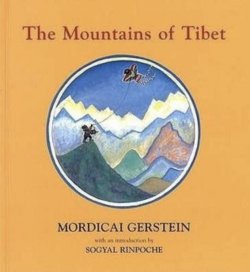Gareth B. Matthews

Review of The Mountains of Tibet by Mordecai Gerstein (New York: Harper & Row, 1989). Originally published in Thinking: The Journal of Philosophy for Children 9(4): 1.
High in the mountains of Tibet a little boy was born. He loved to fly kites. The little boy grew up to be a woodcutter. All his life he longed to visit other places; but he never left his valley.
After the woodcutter died, he was allowed to choose whether he would live another life or fade into the endless universe. Remembering that, in his previous life, he had wanted to see more of the world, the woodcutter chose to live another life. But then he had to deal with a whole series of additional choices.
First, the woodcutter had to choose a galaxy for his next incarnation. Then he had to choose a planet within that galaxy. Then he had to choose a form of life on that planet. Having chosen to be a person, he had to choose his country and village. Having chosen to live in the mountains of Tibet, he had to choose his parents, and finally his gender. Remembering that he had been a boy the last time, he decided to try being a girl this time.
So high in the mountains of Tibet, a little girl was born. She loved to fly kites.
The idea of reincarnation belongs to the culture of many parts of the world. A note to this little book suggests that it was the Tibet, a Book of the Dead that inspired its author to write this story. But the idea of “metempsychosis;’ as it is also called, is common in India, parts of the Middle East and Africa, even to Alaska. Yet it is largely absent from the culture of Europe and most of North America. Its absence is our loss.
We cannot, of course, change our cultural heritage at least not directly. But, through literature, we can enlarge what we count as our culture, and the culture of our children. The Mountains of Tibet is a lovely story for cultural enrichment, as well as for developing the philosophical imagination.
The wry ending to this story in which the woodcutter chooses to have everything the same way all over again, except for his gender-reminds us of how lacking in adventure most of us really are. We like what we are used to. Indeed, most of us tend to take our life, our society, our race, our class-whatever they happen to be-as the norm for what a life, a society, a race, and a class should be. The traveler is rare who isn’t always comparing things in the foreign country with how things are back home, the way they are “supposed to be.’
Heidegger and Sartre tell us we are “thrown” into our existence. That we find ourselves existing where and when we do, they tell us, is “absurd;” though perhaps we ourselves can somehow give meaning to what is in itself meaningless.
Stories of reincarnation provide us with a very different response to the question of why we are here They indicate that there is a reason after all. Plato suggests that we get what our previous life made us deserve. According to a Yoruba myth from Nigeria, we, like the Tibetan woodcutter, choose our next in carnation, though the memory of having chosen it is wiped out when we pass into our new life through “the veil of forgetting:’
According to that Yoruba myth, incidentally, the project of my current life is to figure out why I chose this particular incarnation. If I can “recover my choice;’ and come to terms with it, I can be at peace with myself. There is wisdom in that thought
Some children grow up with a strong sense of alienation. They may suspect they were the result of an accident, or even a mistake of some sort. They may think their “parents” are not their real parents.
Sissela Bok, in her biography of her mother, Alva Myrdnl, (Reading, MA: Addison Wesley, 1991), says that her mother was just such an alienated child, She once convinced herself that her real parents were about to rescue her from the false ones. She packed a small suitcase and waited by the roadside for her real parents to come and rescue her (30). I suspect it would have been liberating and empowering for little Alva to reflect on the idea that perhaps her life was the result of a now forgotten choice that she herself had made.
Some adults avoid discussing stories like The Mountains of Tibet with children because they don’t want to fact the question, ‘But is it really true?’ Children, however, are often more ready than their elders to “dwell in possibility” for a while. Anyway, both children and grownups need to make some room in their lives for ‘What-if?’ questions. “What if, like the Tibetan woodcutter, you could choose your next life … ?” is a good way to begin reflection on what really matters in life. As for me, I like to fly kites.
